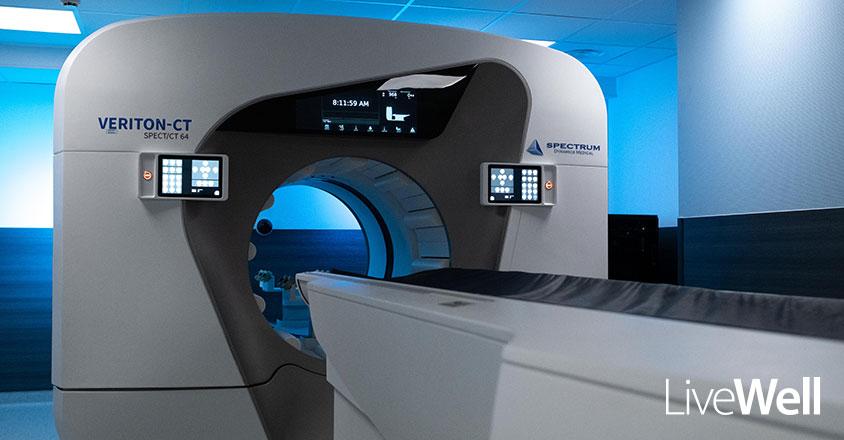Find the best you by replacing bad habits
It could have started as a treat, having a late-night bowl of ice cream. Maybe it was peer pressure to get you to try a cigarette. Perhaps your nerves drive you to bite your fingernails, or boredom makes you rack up too much screen time.
Regardless, we all have a bad habit or two we wish we could ditch. You may have even tried once or twice. If you did, you probably learned it can be hard to break a habit. Why is that? Research from a Florida State University psychologist on the News in Health website shares that habits are beneficial because they free our mind up to concentrate on other things. An example is planning your grocery list while brushing your teeth.
Performing routine behaviors can also trigger the release of dopamine, a natural feel good chemical that makes you happy. Consequently, when you try breaking your routines, it can prevent the release of dopamine, increasing your craving to perform the habit you are trying to break. Thus making it harder to stop the habit you are trying to break.
Therefore, we are bringing you tips backed by research to help you implement little changes to help you improve.
According to Harvard Health, you should start by considering what they refer to as the Three Rs: reminder, routine and reward.
Most of our habits are sparked by a routine. Perhaps every time you drive past a certain coffee shop, you can’t help but pull in and get a sugar loaded Frappuccino. One suggestion is to avoid driving by that coffee shop. If you do, you can reward yourself with a healthy alternative like tea.
Harvard Health also recommends keeping a journal and writing down what you feel when you need to perform the bad habit. After a few days, you can probably identify the cause and work on substituting it with a good habit.
The last tip from Harvard Heath explains that your best chance of breaking a bad habit is motivation and the belief that you can achieve the desired result. If you smoke one pack of cigarettes a day now and it seems impossible to stop, try reducing it to a half pack a day. Then reduce it again when you are ready.
Habits are easy to continue, which is why they are habits. With a little effort and solid strategies, you can change them.
Ready to get healthy?
Sign up for our digital newsletters to receive health tips, recipes, success stories for inspiration and information about new doctors to help you on your journey to better health.
Genesis HealthCare System’s Health and Wellness content conveniently provides accurate and helpful information. Your health history and current health may impact suggestions provided through our Health and Wellness content. Although we hope this information is helpful, it is not a substitute for your doctor's medical advice. Before making any significant changes, please consult your doctor.

Habits are easy to continue, which is why they are habits. With a little effort and solid strategies, you can change them.
Is your skin ready to brave the winter air?
The winter season brings the holidays, snow and cozy nights in. It also can bring an increase in frustrating skin conditions. Do you know the causes (and best treatments!) for common winter skin conditions? Find out below.
Ready to get healthy?
Sign up for our digital newsletters to receive health tips, recipes, success stories for inspiration and information about new doctors to help you on your journey to better health.
Genesis HealthCare System’s Health and Wellness content conveniently provides accurate and helpful information. Your health history and current health may impact suggestions provided through our Health and Wellness content. Although we hope this information is helpful, it is not a substitute for your doctor's medical advice. Before making any significant changes, please consult your doctor.

Do you know the causes (and best treatments!) for common winter skin conditions? Take our quiz to find out.
Colonoscopy – Why is early detection so important?
Did you know?
Colonoscopies are 95% accurate and are the only screening that can prevent colon cancer by removing pre-cancerous polyps.
Do you know when you should get a colonoscopy?
The American Cancer Society has lowered the recommended age from 50 to 45 for colon cancer screenings. If you do not have a family history of cancer, then you should get a screening every 10 years.
Why is getting a colonoscopy important?
Colon cancer is the 3rd most dangerous cancer in Ohio. A colonoscopy can lead to early detection and results in a 91% five-year survival rate of colon cancer.
What does survival rate mean?
The term survival rate means the percentage of people who are alive five years after they were diagnosed or started treatment for a disease, such as cancer.
This means, it is essential to detect colon cancer earlier rather than later. If stage 4 colon cancer is diagnosed later, the survival rate drops to 13%.
How often does colon cancer impact women?
Colon cancer is seen in 1 in 25 women. It can affect anyone so make sure you and your family are getting a screening at 45.
Need more information?
Visit genesishcs.org/screenings for more information.
Definition of 5-year survival rate: Definition of five-year survival rate - NCI Dictionary of Cancer Terms - NCI
Ready to get healthy?
Sign up for our digital newsletters to receive health tips, recipes, success stories for inspiration and information about new doctors to help you on your journey to better health.
Genesis HealthCare System’s Health and Wellness content conveniently provides accurate and helpful information. Your health history and current health may impact suggestions provided through our Health and Wellness content. Although we hope this information is helpful, it is not a substitute for your doctor's medical advice. Before making any significant changes, please consult your doctor.

Colonoscopies are 95% accurate and are the only screening that can prevent colon cancer by removing pre-cancerous polyps.
A big loss for a healthier life
“It is about your mindset and your determination to meet your goals,” said Laraine Kemery, an advocate for weight loss. Laraine is a wife and a mom of four. All four of her children are active in sports, so she and her husband are constantly on the go. With her busy lifestyle, Laraine determined she wanted to become a healthier version of herself physically, mentally and emotionally. With her efforts and the help of the Genesis Weight Loss Program, she is down 51 pounds and is not stopping.
Change in lifestyle
Laraine wanted to make a change in her lifestyle. “I wanted to be healthier, and I knew the journey involved changing my lifestyle and re-learning what I already knew,” said Laraine. Kelli M. Gevas, M.D., Board-certified in Obesity Medicine and Obstetrics and Gynecology (Ob/Gyn) helped change Laraine’s life. Dr. Gevas has an advanced knowledge of weight loss treatments. Every plan she creates is personalized to that individual and their goals. Laraine’s plan involved re-learning nutrition, specifically what foods are made of and the impact they have on the fat and muscle in her body and including what and when to eat. Dr. Gevas also provided diet tips and goals to set in place to achieve success.
“People often do not understand nutrition,” said Dr. Gevas. “If you are starting your weight loss journey, start with small changes. For example, add more healthy foods into your diet that you enjoy to replace unhealthy foods you used to eat. It is important to enjoy eating and not feel deprived to have long-term success.”
Along with nutrition, Laraine has also changed her lifestyle through exercise. “To stay in shape, my husband and I run, and our children bike alongside us,” said Laraine. “This way of exercising involves our entire family and gets everyone outside. My husband and I also weight lift three to four days a week to help build muscle.”
“There are a lot of long-term benefits to exercising,” said Dr. Gevas. “For weight loss, there are simple exercises you can start with, such as 10 minutes of cardio band workout or chair strength exercises if you have back pain. The key to seeing weight loss is strength exercises, staying consistent and a mindset change to stay active.”
Striving for more
“Everyone’s journey to getting healthy is different,” said Laraine. I had to take action to fully enjoy the fun times I have with my family.”
Laraine has also implemented this new lifestyle she learned from Dr. Gevas into her family’s life. She mentioned that her children are active in sports, but now they also know the importance of eating healthy and staying active. Laraine mentions that her husband is also learning from her lifestyle and has also lost over 20 pounds. “Weight loss is a touchy subject for some people,” said Laraine. “I want to bring awareness to this topic and let people know there are so many solutions for them to try.”
Genesis HealthCare System’s Health and Wellness content conveniently provides accurate and helpful information. Your health history and current health may impact suggestions provided through our Health and Wellness content. Although we hope this information is helpful, it is not a substitute for your doctor's medical advice. Before making any significant changes, please consult your doctor.

With her efforts and the help of the Genesis Weight Loss Program, she is down 51 pounds and is not stopping.
Snow shovel tips for continued health
Are you ready to shovel lots of snow?
Although snow removal isn’t the most loved seasonal activity, you may be on a mission to maintain the cleanest driveway in town. While we often think about protecting our backs when picking up a shovel, we should also consider our overall health.
Avoiding risks
Remember that manual snow removal is a form of cardiovascular exercise. Shoveling tall piles of snow, even in our best-dressed layers, can put additional stress on our hearts.
The American Heart Association (AHA) reports that handling heavy snow may increase the risks of a heart attack or cardiac arrest. A few minutes of shoveling can raise the heart rate to mimic heavy aerobic activity, which can affect those who aren’t in the best cardiovascular shape.
According to the AHA, cooler outdoor temperatures can result in elevated blood pressure and constricted blood vessels. Many people unintentionally hold their breath while shoveling, leading to increased heart rate and blood pressure.
As we mainly use our arms to shovel, it places more stress on the heart than working with our legs. The Mayo Clinic also advises to avoid shoulder strain. Picking up and tossing snow can promote shoulder injuries or worsen arthritis. It’s best to push snow instead of lifting it.
Remain injury-free
Follow these tips before picking up the shovel:
Avoid eating a large meal or consuming caffeine.
Shovel sooner than later. Fresh snow weighs less than melted snow.
Just like any other workout, stretch before you start.
Stay hydrated with water or sports drinks.
Don’t forget that shoveling isn’t a race. Maintaining good balance can help avoid slips and falls.
When to stop
If you don’t feel well, it’s time to take a break. Have your phone in case you need help. If you fall, the Mayo Clinic recommends rolling up to your knees if you don’t feel injured. Put your feet between your hands, one at a time and push yourself upright.
While snow removal isn’t the most glamorous form of winter exercise, it can take a toll on the body. If you’re determined to win that cleanest driveway award, talk to your doctor first, especially if you have a history of heart disease or have a sedentary lifestyle.
Ready to get healthy?
Sign up for our digital newsletters to receive health tips, recipes, success stories for inspiration and information about new doctors to help you on your journey to better health.
Genesis HealthCare System’s Health and Wellness content conveniently provides accurate and helpful information. Your health history and current health may impact suggestions provided through our Health and Wellness content. Although we hope this information is helpful, it is not a substitute for your doctor's medical advice. Before making any significant changes, please consult your doctor.

While we often think about protecting our backs when picking up a shovel, we should also consider our overall health.
Continuing to earn our spot among the Top 50 Heart Hospitals in America
Thanks to the generosity of our community, the Genesis Heart & Vascular Institute recently became the first in Ohio to have a Veriton-Spect CT scanner. This innovative technology allows us to perform more diagnostic studies, thereby enhancing the level of care we provide. Scanning is completed in 12 minutes, reducing the time the patient is in the scanner by half.
Why the Veriton-Spect CT is special
One significant advantage of the Veriton-Spect CT scanner is its ability to detect Cardiac Amyloidosis.
This condition involves the accumulation of misshaped proteins in the heart, which can impair its function and eventually lead to heart failure.
To test for Cardiac Amyloidosis, patients typically have two or three appointments in one day. During the first appointment, a radioactive tracer is injected into a vein in the patient’s arm. The only sensation a patient will experience is a small pinprick from the injection needle, and the tracer will naturally exit the patient’s system within two days.
The tracer travels to the heart within one to three hours. During this waiting period, patients are free to eat, drink and move around. In the second appointment, the patient lies on a table while a technologist uses a special camera to scan the chest. Additional imaging may be required during a third appointment on the same day.
The scan produces detailed 3D high-resolution images of the whole body for your healthcare provider to review, helping to determine the best treatment options.
The addition of the Veriton-Spect CT scanner is yet another example of how Genesis continues to bring innovative heart care to our community.
Learn more at genesishcs.org/heart.

Thanks to the generosity of our community, the Genesis Heart & Vascular Institute recently became the first in Ohio to have a Veriton-Spect CT scanner.
Genesis Orthopedic Surgeon Obtains Additional Credentials
Thai Trinh, M.D., FAANA, Board-certified and Fellowship-trained Orthopedic Surgeon with Genesis Orthopedic Sports Medicine, recently earned the Orthopaedic Sports Medicine Subspecialty Certification from the American Board of Orthopaedic Surgery (ABOS). The certification demonstrates Dr. Trinh’s commitment to providing patients with a high-quality of orthopedic care.
“We are proud of Dr. Trinh’s dedication to expanding his knowledge in the orthopedic sports medicine field,” said Carley Love, Director, Genesis Orthopedic Services. “Our patients benefit from Dr. Trinh adding this certification by receiving the best possible orthopedic sports medicine and surgical care.”
The Subspecialty Certificate in Orthopaedic Sports Medicine is earned by Board-certified Orthopedic Surgeons who have demonstrated qualifications in sports medicine beyond those expected of other orthopedic surgeons. This is done by obtaining additional training, having a practice characterized by a volume of cases in sports medicine, or having made significant contributions to this field.
Visit genesishcs.org/orthopedic to learn more about the Genesis Orthopedic Center and the Orthopedic Team.

Thai Trinh, M.D., Earns Orthopedic Sports Medicine Certification.
Gift yourself a stress-free season
As we approach the holidays, you may feel an increased need to maintain traditions, settle tensions, manage grief or stay on the path to recovery.
If you find yourself concerned, know that you’re not alone. Being proactive about your wellness can help you improve your mood, energy and daily function.
Nina Ayala, LPAT, ATR-BC, Genesis Behavioral Health Therapist, and Nicki Stewart, LCDC III, CT, Genesis Behavioral Health Chemical Dependency Counselor, offer these tips to help manage seasonal stressors.
Holiday finances
Maybe you’re worried about paying for gifts and meals due to financial setbacks. Communicate your concerns to family and friends.
“Say, ‘I don’t think I can’t buy individual gifts this season,’” said Nina. “Instead of cooking an entire pricey family meal on your own, suggest a potluck to loved ones for this year’s get-together.”
Shift the focus to spending time with your loved ones.
“Remember your value is not dependent on what you can materially provide,” said Nina. “Make plans to enjoy experiences such as holiday lights and cookie making.”
New traditions
Whether you’re missing a deceased loved one, a relative who can’t attend a family dinner or a child who has moved away from home, grief is often heightened during the holidays.
Restructuring your schedule for celebrations can become worrisome.
“Develop new traditions,” said Nina. “Spend time together. Learn how to normalize the holidays to feel refreshed.”
Prioritizing your needs
Remember to focus on your mental and physical health.
Depression and seasonal affective disorder are often experienced during the holidays. Seasonal gatherings can be hard for introverts, who get drained more easily than extroverted people who enjoy multiple celebrations.
Know what’s in your control to help limit stressors.
“Take a break,” said Nicki. “Set healthy boundaries.”
Spiritual concerns can develop during the holiday season, leading to a feeling of disconnect or depression.
“We’re happy to discuss faith-based questions about the holidays,” said Nina. “We work with a great Spiritual Care Department who supports patient requests.”
Nina recommends finding ways to be creative or to feel connected to manage holiday stress, including exercise, music, art, journaling, prayer and meditation.
“You can’t pour from an empty cup,” said Nina. “Self-care doesn’t have to be an expensive massage or fancy manicure. Take 15 minutes to reset.”
Recovery during the holidays
The season can be challenging for those in drug and alcohol recovery.
“Have something else ready to do if you’ll be in a situation with drugs or alcohol,” said Nicki. “Plan an escape route.”
Complete difficult activities at the beginning of the day. Build a support system to help motivate change.
“Eliminate toxic environments,” said Nicki, “Create systems. Routines work best when they’re started as small changes to your day.”
Confidential resources
Nicki and Nina emphasize the importance of asking for help, especially if you feel that low mood and energy are impacting your daily life.
“There’s nothing wrong with saying you need support,” said Nina. “The conversation about accepting mental health treatment is changing for the better. Anyone can feel stress and seek mental health help.”
No one needs to know you’re seeking help unless you share the information with others.
“We abide by laws to protect confidentiality except in serious cases of harm to self or others,” said Nina.
“It’s OK to have a hard time around the holidays,” said Nicki. “It’s how you work through it that matters.”
If you need immediate help, the Suicide and Crisis Lifeline is available to anyone by calling 988.
“It’s a safe, confidential number to call and share that you’re struggling,” said Nina.
Genesis Behavioral Health offers inpatient and outpatient behavioral healthcare for adults, adolescents and children. They can be contacted at 740-454-5927.
Visit genesishcs.org/behavioralhealth for more information.
Genesis HealthCare System’s Health and Wellness content conveniently provides accurate and helpful information. Your health history and current health may impact suggestions provided through our Health and Wellness content. Although we hope this information is helpful, it is not a substitute for your doctor's medical advice. Before making any significant changes, please consult your doctor.

If you find yourself concerned, know that you’re not alone. Being proactive about your wellness can help you improve your mood, energy and daily function.
Out with the old, in with the new
10 modern guidelines to follow for your health.
It’s that time of year when everyone is thinking about New Year’s resolutions. The most common — lose weight, quit smoking, exercise more, get organized ― are increasingly being replaced with a new focus on mental health and wellness.
Mental health refers to how well you function at school, at home, at work and socially. Good mental health is characterized by having coping skills, regulating emotions, seeking support and engaging in healthy activities.
Mental wellness refers to how you invest in your mental health. It’s all the actions you take to ensure your mental health needs are met and maintained.
If you are resolving to pay attention to your mental health this year, here’s how to do it:
Don’t keep work completely separate. Separating work and home has gotten harder with the rise of remote and/or hybrid schedules. Current advice is to leave work at work, which seems unlikely if work is one floor away. However, a study published in the January 2022 issue of Current Psychology says that talking about work can be good for you if done correctly. The study followed 140 couples and found that those who communicated honestly about their work had higher levels of relationship satisfaction. Those couples set a time limit and followed it. If talk strayed to work too often, they went out and did something fun.
Create a mental health wellness plan. Create a guide of coping skills, people to talk to in stressful situations and activities you enjoy. There are plenty of examples of mental health wellness plans online. Look for one that includes strategies to balance your thoughts, emotions and behaviors.
Put yourself first. Self-care isn't selfish. It's important to take time every day for yourself and your mental health. Do what helps you relax and recharge and seek out experiences that have a calming effect.
Learn a new skill. A recent study from Thomas Jefferson University reveals that every time you learn something new, your brain becomes more capable of learning.
Exercise. Exercising for at least 30 minutes every day can help alleviate symptoms of depression and anxiety. Go for a walk, ride a bike, take a fitness class or play a sport with friends and family.
Be grateful. Practicing gratitude every day can invoke feelings of thankfulness and optimism that make managing challenges easier. Don't beat yourself up when you make a mistake – everyone makes them.
Eat well. A balanced diet contributes to both physical and mental health.
Get enough sleep. Health authorities recommend that adults get between seven and nine hours of sleep consistently. Read about sleep hygiene – controlling your environment works.
Slow down. Notice the things you are doing. Strive to be aware of the moment, especially when it’s positive.
Ask for help when you need it. It's a sign of strength to reach out when your mental wellness is suffering.
Ready to get healthy?
Sign up for our digital newsletters to receive health tips, recipes, success stories for inspiration and information about new doctors to help you on your journey to better health.
Genesis HealthCare System’s Health and Wellness content conveniently provides accurate and helpful information. Your health history and current health may impact suggestions provided through our Health and Wellness content. Although we hope this information is helpful, it is not a substitute for your doctor's medical advice. Before making any significant changes, please consult your doctor.

If you are resolving to pay attention to your mental health this year, here’s how to do it.